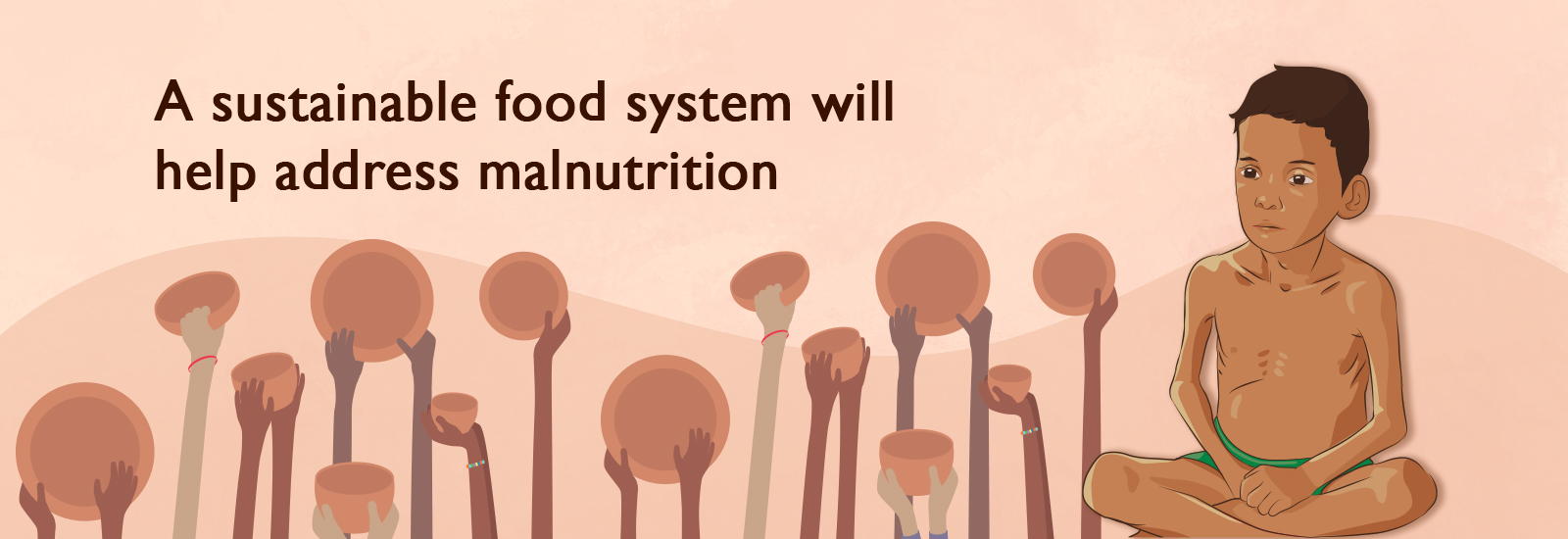
Q : How does environmental degradation impact health?
A : The first assault of environmental degradation is on our health, which is one of the biggest reasons we try to protect the environment. The environment has three distinct entities – air, water, and land.
We are exposed to the ambient air every moment of our life. We breathe the surrounding air 15 times in a minute, and we intake half a litre of air in each breath. This means if the surrounding air is polluted, we are forced to inhale 10,000 litres of polluted air a day. Polluted air causes severe diseases, including of lung, heart, and kidney. As an estimate, air pollution is one of the top 10 killers globally and is the fifth leading cause of death in India.
Polluted water harms the body and leads to water-borne diseases like diarrhoea, typhoid, and jaundice. It is estimated that about 3.8 crores Indians suffer from water and sanitation-related diseases, and 1.5 million children die due to diarrhoea alone.
Land pollution essentially contributes to air and water pollutions. Industrial, agricultural, commercial and residential activities pollute the land, water, and air environment. Foodgrains (rice, wheat) and vegetables produced from contaminated soil affect quality and may contain toxic substances like arsenic, cadmium, lead, mercury, and others, and pose a threat to human health.
Q : What are the specific impacts of environmental degradation on nutrition?
A : Environmental degradation has profound effects on the quality as well as quantity of food. The increase in carbon dioxide levels in the atmosphere decreases micronutrients like iron, zinc, and vitamins in stable food items like rice and wheat. These micro-nutrients are essential for the physical and mental development of children as well as for maternal health. Environmental contamination from industrial and agricultural chemicals such as heavy metals, organochlorines, and radionucleotides may compromise nutritional status and health through changes in diet.
Q : What is the tool developed by TERI and collaborators to track the effects of air pollution on human health?
A : TERI, in collaboration with researchers from North Carolina State University, All India Institute of Medical Sciences, and Statconsulta, developed an 'Air Pollution Health Effects tool' to assess and quantify the association between significant air pollutants and respiratory illnesses. The tool can be accessed here.
Q : What is the tool developed by TERI for health vulnerability assessment and tracking climate-linked illnesses?
A : A prototype of 'Health Vulnerability Assessment' digital tool is being developed for state health departments in India to upload health data, and generate vulnerability indices and ranks for all the districts using the tool. This vulnerability assessment tool helps prioritize and distribute resources to the most vulnerable communities and identify drivers of health vulnerability, thus informing and strengthening the vulnerability reduction planning process. The tool can be accessed here.
Q : What are TERI's latest studies on the subject?
A : On air pollution and health effects, the team has developed knowledge products-factsheet, policy brief, and infographics based on evidence generated on health survey and air quality monitoring in six districts with different ecological settings. A new heavy metal exposure index (HEI) has been formulated to mark PM2.5 particles having higher toxicity due to toxic heavy metals.
The team has created a new child health index using principal component analysis of district-level data taken from NFHS-4, including crucial health parameters such as stunting, wasting, underweight, anaemia, and diarrhoea in the most vulnerable age group (below five years). The vulnerability index of agriculture to climate change, a relative measure of risk to agriculture due to climate change severity, was also assessed. Child health index and vulnerability index of agriculture to climate change help prioritize the regions and populations in India that require greater attention to enhance crop productivity.
The effect on health due to crop residue burning is one of our priority areas for the present and future. Read more.

Q : What sustainable approaches can be adopted to address malnutrition?
A : Malnutrition is caused by the lack of nutritious food, poor hygiene and sanitation, frequent illness, poor care practices, and lack of access to services. Most of these are preventable or treatable through effective health and nutrition interventions. Maternal literacy, the status of women in society, economic and social factors including poverty and income distribution are strong determinants of child health and influence care practices at home. Evidence suggests that improving the social capacities of beneficiaries – empowerment, self-efficacy, aspiration, agency, and well-being – can play a crucial role in how people access and utilise nutrition services available to them, thus improving nutrition outcomes. Along with this, the promotion of sustainable agriculture, support to small- scale farmers and accessibility to technology and markets can further improve the availability of nutritious foods. A holistic approach of sustainable food system will help in addressing the issue of malnutrition. Significant improvements in temperature control storage and transport are required to improve access to perishable produce such as fruits and vegetables which are a treasure trove of micro nutrients.
Expanding food rations (PDS) to include traditional grains such as millets would help bring more nutrients into to the diet and encourage cultivation of more resilient crops and adoption of sustainable agricultural practices.
Q : What are the public health policies in place to address the impact of the environment on health?
A : The missions and programs are:
- Community demand-driven (CDD) programs have been implemented since 2004, requiring improvements in water supply, sanitation, and hygiene, which was an effort to improve the health of children and reduce diarrhoea and water-related illnesses.
- The National Rural Health Mission (NRHM) was launched in 2005 to provide accessible, affordable, and quality health care to the rural population, especially the vulnerable groups.
- India had launched the Swachh Bharat Mission in 2014 to accelerate the efforts of achieving universal sanitation coverage.
Q : What are the challenges in building a climate-resilient public health system?
A : These are the primary challenges:
- Inadequate funds: India is spending nearly all allocated funds to public health to develop a system that focuses on curing and treating disease while protecting public health through prevention is not emphasized enough.
- Frequent extreme weather events: Cyclones, landslides, droughts, and urban floods.
- Insufficient data: More robust health data system to track effects and health challenges of climate change, air pollution, and others.
- Absence of trained workforce: The country has no skilled human resources to respond to climate-related health emergencies.
The explainer has been put together by Ms Meena Sehgal – Senior Fellow, Dr Kanhaiya Lal – Associate Fellow, Ms Vidhu Gupta – Associate Fellow, and Ms Mahima Uttreja – Research Associate, researchers working in the areas of health, environment and waste management.
